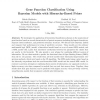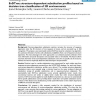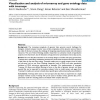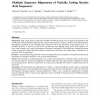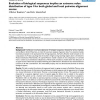152 search results - page 30 / 31 » Using Secondary Structure Information for Protein Folding in... |
BMCBI
2006
13 years 5 months ago
2006
We investigate the application of hierarchical classification schemes to the annotation of gene function based on several characteristics of protein sequences including phylogenic ...
BMCBI
2005
13 years 5 months ago
2005
Background: Structure-dependent substitution matrices increase the accuracy of sequence alignments when the 3D structure of one sequence is known, and are successful e.g. in fold ...
BMCBI
2004
13 years 5 months ago
2004
Background: The increasing complexity of genomic data presents several challenges for biologists. Limited computer monitor views of data complexity and the dynamic nature of data ...
BMCBI
2005
13 years 5 months ago
2005
Background: High quality sequence alignments of RNA and DNA sequences are an important prerequisite for the comparative analysis of genomic sequence data. Nucleic acid sequences, ...
BMCBI
2008
13 years 5 months ago
2008
Background: Confidence in pairwise alignments of biological sequences, obtained by various methods such as Blast or Smith-Waterman, is critical for automatic analyses of genomic d...
